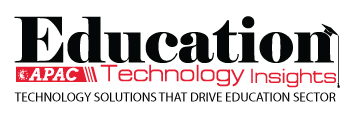THANK YOU FOR SUBSCRIBING
Be first to read the latest tech news, Industry Leader's Insights, and CIO interviews of medium and large enterprises exclusively from Education Technology Insights
Empowering Education: Addressing Technology Access And Learning Loss Among Low-Income Students In A Post-Covid World
Dr. Dieuwertje J. Kast, Director of STEM Education Programs at USC Joint Educational Project & Sophie Eves affiliation as the Medical STEM Program Coordinator also for the USC Joint Educational Project.
 Dr. Dieuwertje J. Kast, Director of STEM Education Programs at USC Joint Educational Project & Sophie Eves affiliation as the Medical STEM Program Coordinator also for the USC Joint Educational Project.
Dr. Dieuwertje J. Kast, Director of STEM Education Programs at USC Joint Educational Project & Sophie Eves affiliation as the Medical STEM Program Coordinator also for the USC Joint Educational Project.Access to technology has become more crucial than ever in our contemporary world, especially with the prevalence of virtual classrooms and remote learning. The COVID-19 pandemic prompted significant shifts in how we work, socialize, and educate ourselves, accelerating technology usage as we were forced into isolation. Our online presence surged, and virtual schooling became the standard for K-12 students. However, the digital divide, evident even before the pandemic, remained stark. In 2019, 11% of California households lacked access to a desktop, laptop, or other computing device at home, leaving them unable to complete essential tasks such as typing a school report or conducting research. Low-income families were disproportionately affected by this lack of access, with 35% of households earning under $30,000 annually not having access to high-speed internet.
The COVID-19 pandemic exacerbated the digital divide, presenting significant challenges for remote learning. In response, many schools and institutions took measures to bridge this gap by improving technology access at home, distributing laptops and internet hotspots. However, disparities persisted, with many families still sharing limited resources. Nelly Cristales, a second-grade teacher at 32nd St, shared her experience of inadequate technology access and connectivity issues during and after COVID-19.
“COVID manifested itself in a merciless manner, disregarding the who, what, when, how, or why of anything or anyone. As an educator, I witnessed firsthand its wide-ranging effects. We found ourselves ill-prepared to provide adequate technology access to all students, let alone ensure reliable connectivity. Even after devices were distributed, we encountered issues with functionality—some failing to charge, others painfully slow, and cameras malfunctioning. Frustration permeated as connectivity issues persisted, causing constant lagging and disruptions. Teaching became an emotional ordeal, often concluding with tears of exhaustion. Students struggled even more, falling behind at an alarming rate. Compounding the challenge, families often shared confined spaces, leading to distractions during online sessions—televisions blaring, radios playing, and the aroma of cooking permeating the air. For example, one of my students, Alejandro, would log in from his living room into his class. In the background, I could see the television, his grandma cooking in the nearby kitchen, a dog walking around and his little sister playing with her toys. Each day presented its own set of struggles.”
Despite strides made in improving internet and technology access, many families, especially low-income ones, still lack the necessary support for remote learning, leading to significant learning loss among K-12 students.
To address the COVID learning loss and increase technology accessibility within public schools, initiatives like the University of Southern California (USC) Joint Educational Project (JEP) STEM Education Programs are crucial. These programs integrate technology into hands-on STEM curriculum, with a specific focus on serving low-income students. During COVID, these programs were adapted for distance learning, with the distribution of STEM kits and creation of digital resources and instructional videos to ensure accessibility for all students. For example, a biotechnology unit includes a simulation of remote surgery with a computer and a webcam, where students engage in a hands-on activity to enhance their understanding of complex concepts.
In conclusion, the COVID-19 pandemic highlighted the critical importance of technology access in education, particularly for low-income students. Addressing these issues requires collaborative efforts between educational institutions, policymakers, and technology providers. By prioritizing investments in infrastructure, providing targeted support for underserved communities, and fostering partnerships to expand access to technology resources, we can narrow the digital divide and empower all students to succeed in a rapidly evolving educational landscape.
Read Also
Empowering Educators through Purposeful, Connected and Transformative Learning
Empowering Students to Lead: A New Vision for Civic Learning
The Director's Playbook: Strategic Digital Transformation in Rual Hyper-Growth Districts
The Art and Architecture of Student Support
From At-Risk to At-Promise: The Language Revolution Higher Education Needs
Teaching Tomorrow: How Western Governors University Is Redefining Teacher Preparation

I agree We use cookies on this website to enhance your user experience. By clicking any link on this page you are giving your consent for us to set cookies. More info





















